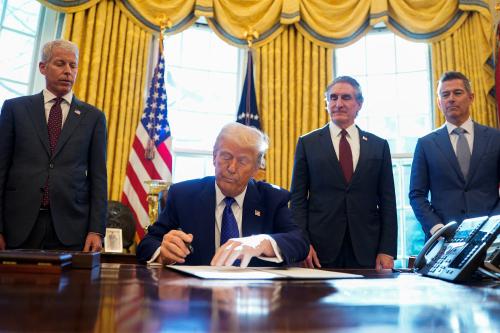At first glance, 2014 seemed like a tax policy wasteland, but two developments may have set the stage for important future initiatives. A wave of tax-driven corporate inversions showed one reason why tax reform is necessary. A detailed plan by House Ways & Means Committee chairman Dave Camp (R-MI) showed how tax reform could be done, but also how tough it will be to achieve.
The beginning of the year was marked by Camp’s sweeping tax reform proposal. Camp and his staff had studied the issue for several years and put together a package that followed, in broadest outline, the canonical formula for tax reform, reducing rates and broadening the tax base in a manner that was roughly revenue- and distributionally-neutral in the 10 year budget window.
The plan would have reduced the number of income tax brackets to three, repealed the alternative minimum tax, slashed or eliminated dozens of targeted tax breaks, reworked the taxation of low-income households, and cut tax provisions that helped state and local governments. On the corporate side, it would have cut the top rate to 25 percent and moved to a territorial system, where income and costs generated in foreign countries are not subject to U.S. taxes.
Nobody loved all of the details of the plan. And it included some gimmicks that may have made it a regressive revenue-loser in the long term. Still, as my Tax Policy Center colleague Howard Gleckman and I wrote, Camp’s most important contribution to reform was the high bar he set. By proposing a specific plan, he made it more difficult for others to promise trillions of dollars in tax cuts without explaining how they would pay for the revenue loss. If and when Congress does pass tax reform, it will likely build on Camp’s hard work.
Part of the case for reform was made, inadvertently, by a wave of tax-driven corporate inversions. An “inversion” occurs when a U. S. company is bought by a foreign firm, and thus qualifies as a non-U.S. company for tax purposes. This is not quite a “stroke of the pen” transaction, but inversions can be accomplished without moving actual factories or human resources to another country.
Most observers believe that companies invert for tax reasons. Some argue the companies are showing a lack of patriotism. After a few well-publicized inversions, and in the absence of Congressional action, the Obama Administration issued new regulations that limited the practice. These new regulations and the potential threat of additional ones may have slowed several planned inversions. Still, Congress has not addressed the underlying tax causes of inversions, including high statutory U.S. corporate tax rates.
These two stories, and the hanging threads in each of them, may drive future reform efforts. Camp’s proposal provides the means to think seriously about tax reform. The inversion debate offers a reminder of why tax reform could be beneficial. Whether progress is made on these issues in 2015 is an open question. But despite long odds, many political leaders seem motivated to pursue it in the coming year. If they succeed, the events of 2014 may look much more important than they appear today.
The Brookings Institution is committed to quality, independence, and impact.
We are supported by a diverse array of funders. In line with our values and policies, each Brookings publication represents the sole views of its author(s).



Commentary
Op-edTax Policy in 2014: Two Developments That May Set The Table For the Future
December 22, 2014